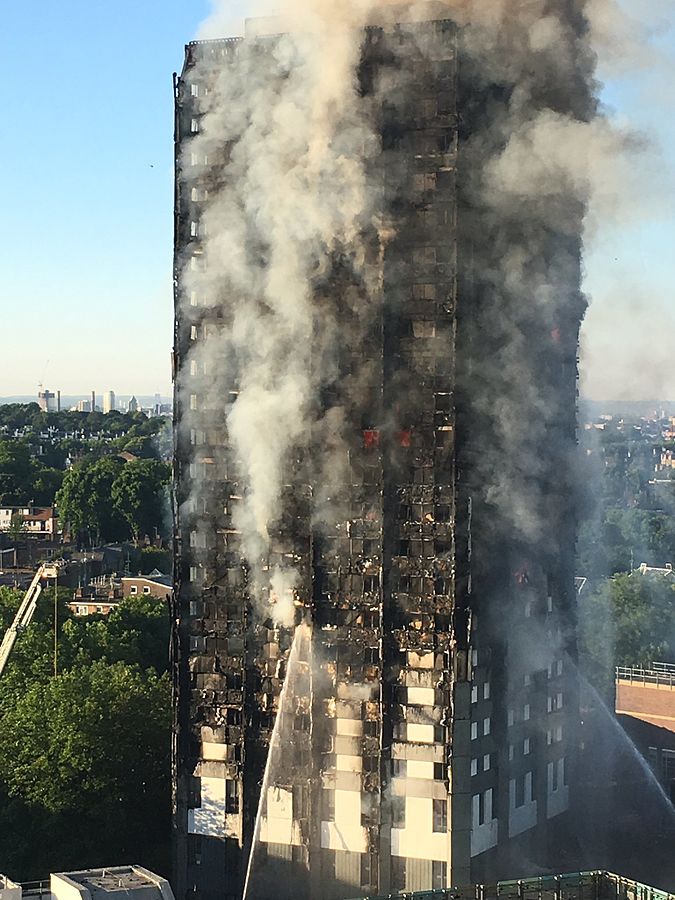
Underinvesting in infrastructure can cost big in the end
It’s only when disaster strikes that we look back, recognise, and accept that there has been a significant shortfall in investment in ageing infrastructure. For the residents of Grenfell Tower in London, there are questions now about whether the cladding, which was used to cost-effectively address environmental issues with heating and cooling, was a conduit for the rapid spread of fire. There are questions about whether a sprinkler system should have been installed, as would be mandatory in a newly-built tower of a similar height. There are questions about the availability of fire-fighting equipment in common parts of the building.
It is only in light of a disaster that investment in infrastructure makes obviously good sense. Let’s look at the maths of Grenfell Tower. Fitting a sprinkler system in a high rise costs around £3,000 per flat based on an industry figure and recent installations. As a per family cost, this no doubt seemed large to a local council. But the costs associated with the disaster will be massive. Ignoring the human cost, the hard costs include the emergency response, donated items, the cost of a public enquiry, the cost to demolish or rebuild, the costs of re-homing and replacing lost property, the cost of funerals and travel to attend these, and the UK Government emergency fund of £5m. The £5m emergency fund figure on its own would have paid for sprinklers in 14 tower blocks the size of Grenfell Tower. In retrospect it seems obvious that this would have been money well spent, regardless of the appropriateness of the cladding.!["Grenfell Tower fire, approximately 6 a.m." by Natalie_Oxford on Twitter [CC BY 4.0 (http://creativecommons.org/licenses/by/4.0)], via Wikipedia Commons "Grenfell Tower fire, approximately 6 a.m." by Natalie_Oxford on Twitter [CC BY 4.0 (http://creativecommons.org/licenses/by/4.0)], via Wikipedia Commons](https://resources.i2owater.com/hs-fs/hubfs/Blog%20Images/Grenfell_tower.jpg?width=332&name=Grenfell_tower.jpg)
It may be that it takes a major water-related disaster – loss of clean water drinking supply to a major conurbation for a significant period of time – for there to be a call to action across the world to re-assess the prevailing approach to water infrastructure.
In the case of water, we’re all to blame. We typically don’t want to pay more for our water or in some parts of the world even to start paying for it. Elected politicians daren’t tackle these kinds of issues because they are generally punished at the polls rather than rewarded for taking decisions in the long-term best interests of a population when it involves short-term pain. Think of healthcare in the US or the Liberal Democrats’ decision to participate in a coalition government with the Conservatives in the UK at a time of economic crisis.
Water infrastructure is old and ageing. Less than 1% of pipe is replaced globally per annum. In many places some of that pipe has been in the ground for 100 years already.
Water bills often don’t reflect the true cost of water with government either subsidising it directly or taking responsibility through general taxation for the building and maintenance of water supply assets.
Prof Young, a specialist in water policy reform and holder of the Research Chair in Water and Environmental Policy at the University of Adelaide, has recently written in news.com.au about the approaching crisis from the point of view of water availability. He proposes that water rights are defined as shares not guaranteed entitlements. A fine idea although it’s difficult to see this being implemented any time soon.
Nor is it likely that infrastructure investment rates will increase until it’s too late.
In the meantime, there are the kind of solutions that i2O offers: smart network solutions. These make the most of existing infrastructure, delaying the day when disaster may strike. A watering can to a sprinkler. But much better than doing nothing.
Tags: Blog, Industry Challenges, UK